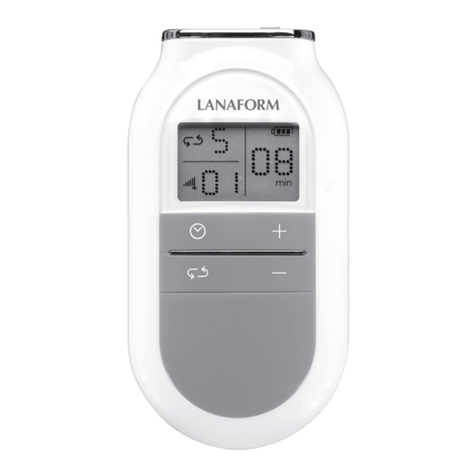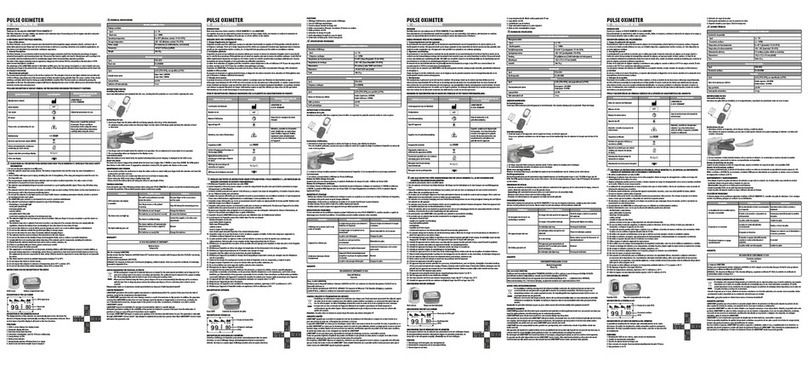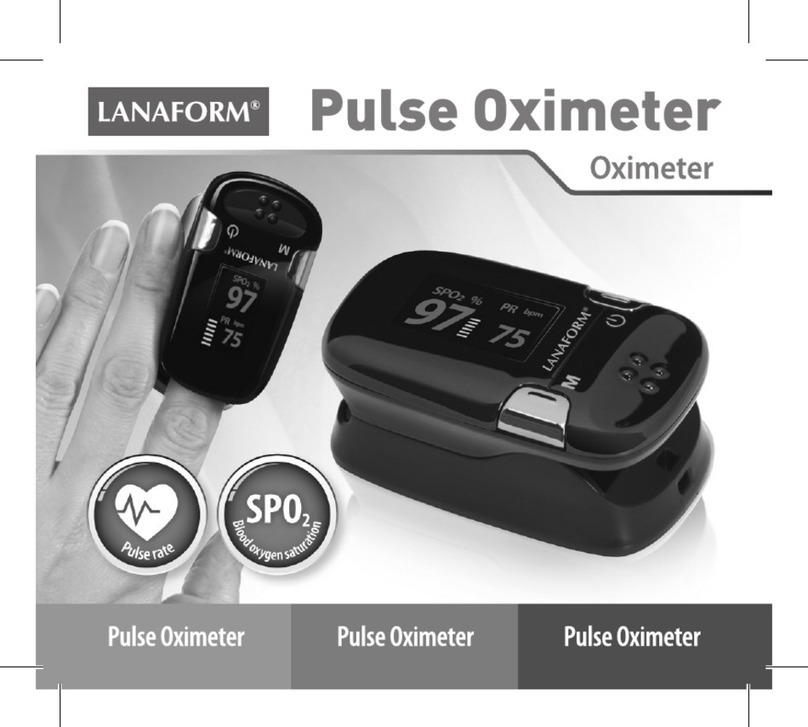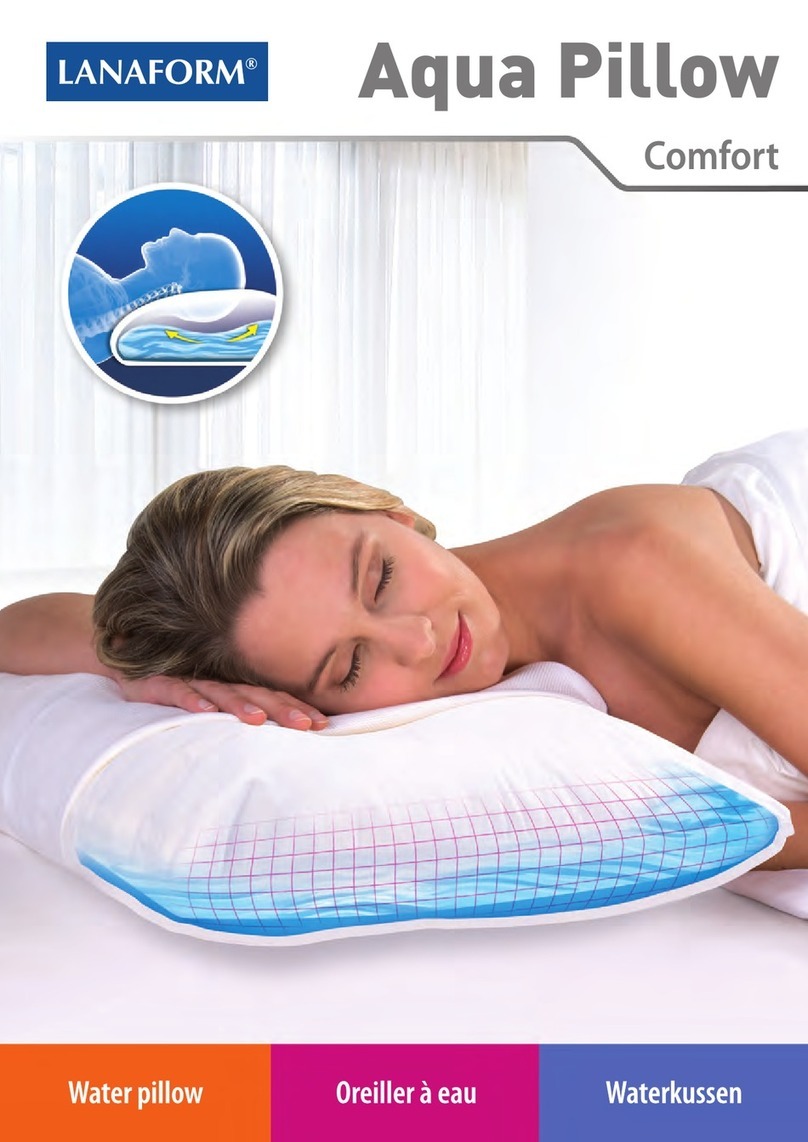
∙The oximeter probe is place on the
same part of the body or same limb
as with the arterial duct of the blood
pressure cu.
∙The user suers from hypotension,
severe vascular atrophy, severeanae-
mia or lack of oxygen.
∙
The user is in sudden cardiac ar-
rest or in shock.
∙Nail polish or false nails may cause
incorrect oxygen saturation or pulse
readings.
• Take care of the measuring probe lens,
which is fragile.
•
Remove used batteries with care. In order
toprotecttheenvironment,usedbatter-
ies should be sent to a collection point
provided for this purpose.
•
Remove the batteries when the oximeter
is not in use for more than two months.
•
Do not immerse the oximeter in water or
expose it directly to sunlight.
•
Do not expose the oximeter to vibra-
tions or shocks.
•
Clean the oximeter probe after each
time it is used.
•
Do not use the oximeter for purposes not
specied in this manual. Follow the in-
structionsin the chapter “Instructions
for use” and use the oximeter with care.
•
The oximeter is not watertight so do no
immerse it in water or any other liquid.
Clean and disinfect the oximeter as de-
scribed inthe “Cleaning and disinfecting
routine” chapter.
•
Do not touch the tip of the measur-
ing probe.
•
Keep the measuring probe clean to
maintain the accuracy of the readings.
• The ambient temperature must not be
too high or too low. For accurate read-
ings, keep the oximeter at an ambient
temperature for more than 30 minutes
before using it.
• Do not use the oximeter at an ambient
temperature above 40°C (104°F) or be-
low 5°C (41°F). These temperatures are
beyondthe oximeter’soperating range.
•
Riskofpollution!Therecommendation
is that the used oximeter should be de-
posited in a recycling centre.
•
2×1.5VAAAbatteries (supplied) arethe
only replaceable accessories of the ox-
imeter. Do not use batteries of other
voltages or specications.
Warning
•
Do not use the oximeter in an envi-
ronment containing ammable gases,
ammable anaesthetic or other am-
mable substances.
•
Do not use the oximeter in an MRI or
CT environment.
•
Do not use the oximeter when it is humid
with overow or water vapour conden-
sation. Do not move the oximeter from
an excessively cold environment to a
high-temperature humid environment.
•
Keep the oximeter out of the reach
of children.
• Use of a used oximeter could cause in-
accurate readings.
•
The oximeter is not designed to diag-
nose or treat a health problem or illness.
E-IM-PO100-001.indd 4E-IM-PO100-001.indd 4 31/07/2020 16:16:2031/07/2020 16:16:20
































